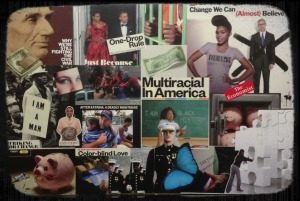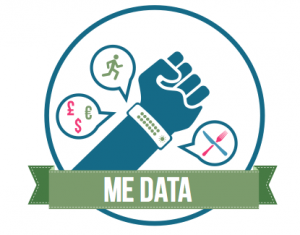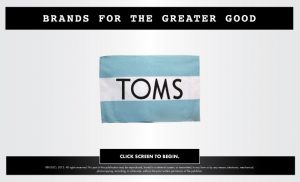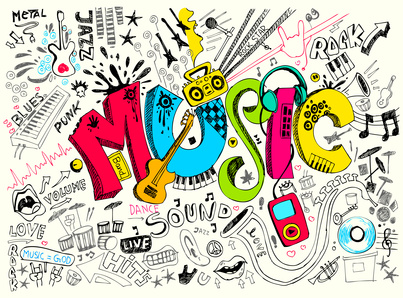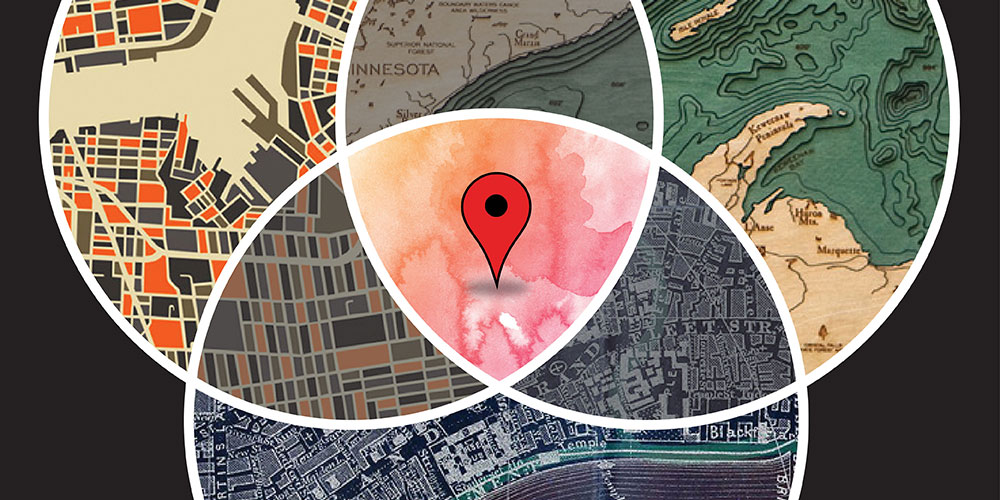What’s Better - Agency or Client Side?
Eeny, Meeny, Miney, Mo …
Choosing your career path is a big decision – no doubt. But, sometimes life presents you with an opportunity to change that path mid way. And in marketing and advertising, more specifically for account people and marketers, that opportunity is always looming.
So, the big question therein lies – Is one direction better than the other? To answer that, you must ask yourself several questions:
- Do I have an initial preference, or am I leaning one way more than the other?
- Do I really understand how the roles/responsibilities differ and how my current skills are/are not transferrable?
- Is there an opportunity to develop myself and advance my career by “switching sides?”
These are just a few questions to consider. But there are also several myths you must weigh as well.
- Client side doesn’t always pay more.
- Client side hours aren’t always better or more structured.
- Agency side isn’t always as glamorous as it may appear.
The reality is there are truly advantages to experiencing and learning both sides of the business. Personally I have jumped twice to each side. And, each time provided enormous amounts of knowledge that I would not have gained otherwise and that I will continue to share with my staff and with my clients. It has made me appreciate how both sides are extremely similar and extremely different.
I know for a fact (now that I own my own advertising agency) I treat my clients with even more respect than I did in the past. I understand their daily challenges; I empathize with the magnanimous amounts of decisions they make in a day; I feel for the fact that they too don’t always get to spend enough time with their families.
Spending the years on the client side that I did has indeed made me a stronger, more effective account person. I’m honored to have been a part of the growth and marketing strategy developed while I was on the client side, and truly appreciate the tireless energy my account teams expended on me on behalf of the agencies that served our brands.
And now, back on the digital marketing agency side as I continue to grow my own firm, I will pass on this amazing learning and serve our clients in the manner they deserve. I will entrench myself in their marketing strategy, understand how they make money and drive customer traffic and trial and make them even more successful than they are today with stand out creative work that will blow…their…minds!
– Cindy Haynes
5 Rituals to get you to that Big Creative Idea
As a writer, sometimes the hardest thing to do or the biggest fear to overcome is uncovering that big creative idea. No matter how long you’ve done it, that little voice in the back of your mind otherwise known as doubt seems to be there taunting you. Daring you to squash it. And so you fight through it. Sometimes with the help of others. Sometimes with the help of dangerous amounts of coffee. But in the end, usually, that other voice inside you otherwise known as confidence wins out. And all is good.
Well hopefully these few rituals can help bust through that block. They are pretty useful when used together or individually.
1. Keep tear sheets to get inspired. When you are stuck on a project, it can be good to refer back to things you have done to get over the hump. Tear sheets or digital ads from magazines, beautiful packaging or anything that inspires you. Keep your past work whether produced or not. Flip through them for idea starters.
2. Step away from the computer. Remove yourself from the setting you work in regularly and get away from the business of the day and your workstation. Even if it’s for 10, 20 or 60 minutes. When you rest your mind, ideas will come easier.
3. Exercise. Sometimes either exercise or meditation can be strong tools for smashing down these annoying walls that block creative thought. You feel more alert and focused and ideas streamline through that energy.
4. Write, write and write. Jot down key words that you associate with the project. As many as you can. It doesn’t matter how weird or inappropriate they are. They’re for your eyes only so no one but yourself will ever know how demented you may be. All kidding aside, it helps. Even write down the opposite of those words. You may find a hidden gem.
5. Hit the bar. Or a restaurant if you don’t want to come back to the office smelling like Maker’s Mark. Or go after work. Either way, go, sit and relax. Start scribbling stuff on napkins. I know, the old” it came to me in a bar and I jotted it down on a napkin” cliché. But just remember this: the cliché started somewhere. Of course, you can also just go sit in the park, or a coffee shop, or yes, even your car. But have fun explaining all the steamed up windows to the police.
Anyway, these are just a few ways that we find helpful. Everyone will have their own quirky ones and those are fantastic too. So we hope these assist you in placing your foot on the neck of your “doubt” and stamping it out like an old cigarette.
Drive Business with These 3 Trends
1. Mainstream Multiculturalism
Never has America’s under-18 population been more racially and ethnically diverse. A bare majority —52%— of children and youths are white. In 29 years (by 2043), U.S. Census projects a majority-minority population.
Drive business by embracing America’s increasing racial and ethnic diversity. Look beyond traditional multicultural marketing. Consider greater synergies between your multicultural and mass-market advertising agencies. Change your mindset and naturally include multi-cultural Americans as talent. And give them leading roles. And think about regionalization differences.
2. Me Data
As smartphone, smartwatches and other wearable technology adoption grows, man and machine will fuse together. People will lap up innovations that help improve their physical and mental well-being. Google glass is just the start. Yeah, it screams geek but it’s the catalyst for a new era where electronics are worn and where body hacking and quantified self becomes the ultimate in geek chic.
Drive business by first understanding the space. Go talk and listen to your customers. While listening, uncover ways your brand can help people be better versions of themselves. Then innovate, prototype and become and ingrained brand.
3. Greater Good
71% of people say they’re more likely to buy a brand if they feel it’s contributing to making the world a better place–Yankelovich. In this new era of social responsibility, cause marketing is now the norm. But you know people can also smell out inauthentic attempt.
Drive business by linking up with a cause that’s central to the brand’s purpose. Easily involve your consumer in the cause Make them feel like they are contributing to the greater good through their involvement with your brand. And most importantly, get the whole organization involved. This isn’t a throwing the money at a non-profit exercise. It’s a stand for something greater than the bottom line exercise.
Is That the Right Music?
IS THAT THE RIGHT MUSIC?
Throughout my career, I have always enjoyed listening to music of all types while I work. And while it’s no shocker that music inspires us, it can have a profound and magical impact on what we create while listening to it, and when those ideas translate to video or film. Simply choosing the wrong music or creating original compositions that miss the mark can completely change the emotion you hope to evoke from the viewer. Again, I admit, this is not news. But I do feel that music is often overlooked in the sense that it can have such a significant role in a spot. Here’s some examples I think really illustrate this well. One of them was a Publix spot I did years ago and I felt using a piece of music by a band called The Album Leaf would be the difference between a spot that evoked real heartwarming emotion and one that made you roll your eyes.
To prove my point, watch this spot:
Now find some piece of music that is a little happier, turn the volume off the spot and watch it again.
Here are some other examples I feel do a tremendous job with music.
1) A funny spot for Hockey Canada but the music really brings it around to be extremely emotional.
2) A classic from Nike.
3) Halo 3 Believe.
4) Gears of War. How can you go wrong with Mazzy Star?
Another method I find very interesting is juxtaposing a piece of music to what you are seeing. For example, a spot or clip might show a very serious topic and use a piece of music that is at the opposite end of the spectrum. That unexpected choice of music can be very jarring and completely change the context and power of the ad itself by that one simple music choice. Steeler’s Wheel’s “Stuck in the Middle With You” during the ear amputation scene in Reservoir Dogs, for example.
That’s it. I shall now turn on some more music and get back to working on our clients.
– James Rosene
The Importance of Growing 8 Arms

Admittedly, that is a long-winded introduction to my point. My wife has often said I am full of hot air and can go off willy nilly on tangents. See, I was about to go off on another one there. But back to my point. The importance of becoming as multi-faceted as creativity is itself. As a partner in my own ad agency, and long-time copywriter by trade, I’ve learned along the way to become just that. Multi-faceted. But years and years before I took this leap into the unknown, I always felt I was more than just a copywriter. That seemed so limiting to me. I kept learning lots of other disciplines. Not necessarily because I felt it was important but because I enjoyed it. I’ve since come to realize it is both. In the early years of my career, I learned Adobe Creative Suite (Photoshop, InDesign & Illustrator) and got pretty good at it. I was fortunate to have an extremely talented Art Director partner for many years who taught me lots of tricks so I was lucky there. But I learned on my own. I became capable of laying out my ideas, designing and retouching photography pretty well and enjoy it very much. Recently I have begun diving into After Effects and Premier to learn video editing and motion graphics techniques. It certainly piles on the weight on your shoulders but it’s a good weight. It has empowered me with an ability to expand my thinking as I have learned of new technology that opens the doors to new ideas. Being more skilled in these technologies makes your brain bigger, fatter and in the words of Kramer from Seinfeld, “mossy”! When concepting alone, with a partner or in a group, knowing other disciplines will lead you down roads to more novel, original and innovative thought, And so I truly believe it’s important to keep growing those arms. The resources to learn are everywhere. Lynda, Skillshare and Tutsplus are great obviously. But every program has tutorials of their own. Even further, all you really need to do is Google whatever it is you want to learn. Tutorials are just sitting there waiting for your little finger to press the video play button.
It’s an invaluable philosophy to hold true to, at any level. If young creatives develop additional skills, and understand more than just their craft, as they move onward and upward they will, in my opinion, become more valuable to their clients and better teachers themselves.
So grow some more arms. And use one of them to crack open a beer and another one to pat yourself on the back because you’re making yourself one very powerful, highly valuable creative.
-James Rosene
Content Strategy Hinges on this One Thing
The idea of content strategy is a bust. Content strategy hinges on one thing and one thing alone: a solid, well-founded, brand roadmap. The brand roadmap consists of five brand dimensions:
- Brand Purpose
- Brand Essence
- Brand Pillars
- Brand Personality
- Tribe Persona
The brand roadmap serves as a filter and springboard. This is the differentiating part of the equation. The second part of the equation takes a different kind of thinking. It’s the left side of the brain. And it has little to do with strategy. This part of the formula focuses on creativity and the ability to develop fresh and on-brief creative solutions. Creative that emotional engages people or provides some kind of utility. If your company has taken the time and due diligence to craft a solid brand roadmap and invested appropriately to creating meaningful on-brief creative work, than sharing on the web is easy. Breakthrough social content will happen when, and only when, both parts of the equation are solved. Without this equation, you’ve got nothing but a blindfolded chicken shooting in the dark.
Farming for Leads Takes a Big Turn
What began as a cold-call LinkedIn conversation has become a major boost for EraserFarm, a Tampa-based branding and advertising agency.
EraserFarm managing director and partner Cindy Haynes got going last summer, when she reached out to a marketing executive with the North American Spine Institute in Dallas. Haynes and her team had tried to make contact with the Tampa-based Laser Spine Institute for branding work, but efforts there stalled.
Haynes clicked with her new contact in Dallas, which led to an in-person pitch for branding services. Then, in October, when Houston-based health care conglomerate Nobilis Health acquired the North American Spine Institute, EraserFarm was named the company’s ad agency of record. The work EraserFarm is tasked with doing for Nobilis includes developing branding campaigns for the spine institute, a national migraine treatment center and a bariatric weight loss program.
It’s a big deal and also a major step toward a big-picture goal for EraserFarm, founded in 2013. “We’ve been able to bypass the large agency stigma,” Haynes tells Coffee Talk. “Some brands are beginning to see past that need to only have a large agency.”
EraserFarm, named for the ideal that an eraser is only a tool to work harder and find a better idea, has signed on several other firms for work in recent months. Haynes, who founded the company with business partner James Rosene after both worked for larger advertising firms, adds that the company is close to a few more significant deals.
“Making the decision to go from a paycheck to being an entrepreneur was a big leap for us,” Haynes says. “It’s finally starting to pay off.”
The New Creative Team. Or Better Yet, the Creative Herd
Can creativity exist within the traditional ad agency framework of the writer/art director team? I think the answer is yes, absolutely. However, is it the best road to take when you’re driving to that proverbial big idea? Not necessarily. Now, more than ever, is the time to loosen the reigns on our definition of a “creative team”. Customizing it to the job or assignment is the foundation for the new “creative herd”.
In this day and age, technology, UX, design, development, social and media can play a bigger role in the creative process. That’s not to suggest we don’t need great writers and art directors because we most certainly do. But bringing together all these disciplines will undoubtedly cast a wider creative net. And we mustn’t lose sight of the fact that an ad is not always the answer to a client’s problem, challenge or opportunity. Embracing this larger partnership of talent ignites ideas you never thought possible and makes it easier to invent with new platforms. At the end of the day, agencies bring more value to their clients and the growth of their brand. And let’s not forget about our creative egos that get stroked when we do some really cool stuff.
Imagine a team that consists of a digital strategist, art director, designer, writer and media. I don’t think I am going out on a limb saying you will walk out of the assignment with more than a print ad. And without even trying, you’ll be building a strong, organic culture of collaboration. Give it a whirl, if you haven’t already, and see how much further a creative herd takes your next idea.
EraserFarm Featured in Communication Arts for North American Spine Campaign
Normal isn’t exciting. It’s not flashy. It’s, well, normal. And while we realize this, it’s just the opposite for someone suffering from chronic neck and back pain. Being able to do the simplest of things we take for granted without pain is truly amazing. And it’s all made possible by a procedure called AccuraScope® from North American Spine. The campaign Normal is Amazing is based in this simple but powerful truth.
We’re very proud, honored and appreciative of Communication Arts for recognizing our client North American Spine, Tampa ad agency EraserFarm and featuring our work for this campaign. Click here for the Communication Art feature.
North American Spine brings together spine specialists from several fields including Orthopedic Spine, Neurosurgery and Pain Management dedicated to the relief of chronic back pain.





